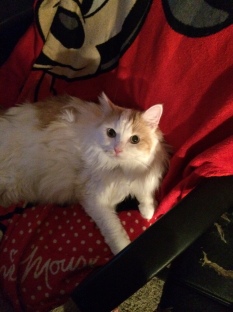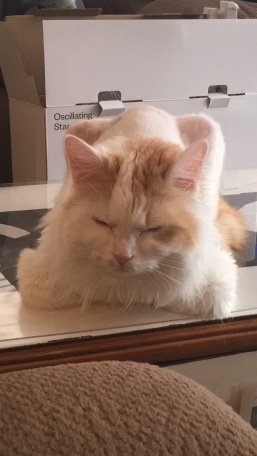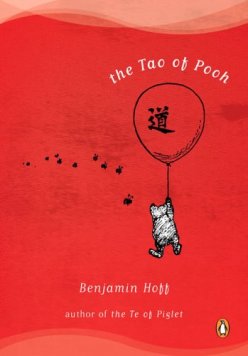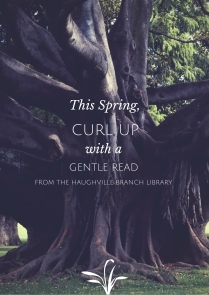Greetings Earthkind!
As part of this class, we are required to publish a weekly response to a prompt given by our professor. This is the second prompt response!
There was no prompt response required for Week 4 due to the Secret Shopper assignment.
Prompt
I have posted two documents in the week five files. One is two reviews of an ebook only romantic suspense novel, one from a blog and one from Amazon. Look over the reviews – do you feel they are both reliable? How likely would you be to buy this book for your library? Is this ebook even romantic suspense?
The other document contains some reviews of Angela’s Ashes, by Frank McCourt, an incredibly popular memoir. These reviews are all from professional publications, feel free to find more on your own I just nabbed a few from the Book Review Digest database for you. How do these reviews make you feel about the possibility of adding Angela’s Ashes to your collection?
Do you think it’s fair that one type of book is reviewed to death and other types of books get little to no coverage? How does this affect a library’s collection? And how do you feel about review sources that won’t print negative content? Do you think that’s appropriate? If you buy for your library, how often do you use reviews to make your decisions? If not, how do you feel about reviews for personal reading, and what are some of your favorite review sources?
Response
Part A
First, spoilers!!!!! Thanks, Amazon reviewer, but I did not find this review helpful. It totally violates John Updike’s 5 Guidelines for Writing Reviews, especially #4. “Go easy on plot summary, and do not give away the ending.” Oops.
Anyway, neither reviews are totally reliable, as they appear to be reviews done by regular readers. This means they are reliable in some ways and not in others.
The Amazon review essentially told the plot of the book, discussed how POV is used, and said they liked it. It almost seems as if the reviewer is writing it for themselves rather than other people. It’s not very helpful, though it is what I would expect from an Amazon review.
The blog reviewer had a little more credibility, in my opinion. It reads much like I would expect a review on a blog to read. It’s accessible for regular people.
It’s polished but not professional.
Based on the description provided by the blogger and the two reviews, I don’t believe the ebook is romantic suspense.
This book is described as “beautiful,” “sweet,” “light,” “clean,” “cozy,” etc. The point of view apparently switches between the female and the male characters.
Most Romantic Suspense, from my understanding of the genre, is described as “fast-paced,” “uneasy tone,” “told from the POV of the heroine,” “graphic details,” “trend towards more sex, violence, strong language,” “sensual descriptions,” and as the heroine being “threatened” and having to “choose between two men, one good, one bad.”
That description and the descriptions of the book don’t appear to be the same, so I would say, no. I don’t believe this novel is in the Romantic Suspense genre.
As a librarian, I would have difficulty choosing this ebook-only novel for my collection. The plot seems typical, but depending on the patrons I serve and whether or not they use our e-collection, I might choose it. It would be good to promote during the holidays (but not as Romantic Suspense).
Additionally, the lack of reviews for ebooks is ridiculous. I read several series which are only published in an e-format, and even though they are really good, actual reviews are scarce.
I believe that as ebooks grow in popularity and more authors choose to only publish in a digital format, more credible reviews will begin to appear.
Part B
The reviews for Angela’s Ashes were all professional, and by reading them, I can see why any library would add it to their collection.
How could they not, with one reviewer stating, “Many a lesser book gets the kind of publicity push that McCourt’s memoir is happily slated to receive. Expect demand, not only from those seduced by blurbs and interviews, but from word-of-mouth thereafter.”
I feel like this is a book I would add in the midst of its popularity because many people would want to read it at once. I feel like it would be a good book to read for a book club, which would add to the large discussion around it. I also feel like it’s one I would keep around for patrons like me, who tend to not read books during the time they’re most popular.
Part C
I see just how powerful reviews can be, and I’m actually mad about how unfair it is that some books get so many reviews (good or bad, they generate content for the conversation and drive circulation) when other books struggle to get one professional review. It makes me want to learn about how professional reviewers and publications choose what they review and why.
It might be impossible to read and review every book, but I want more details on why certain books are chosen and other books left out.
I feel like if librarians only went with what professional reviewers say, libraries would have a biased collection.
Though I find these professional reviews interesting, I wonder what voices are missing from the conversation. What do actual readers think of the book?
I think librarians that can glance through both professional, semi-professional, and general reviews are the ones that might have a more balanced collection, though that is a daunting task, with so many books out there (and so little reviews for some books).
On a personal note, I tend to avoid reviews when selecting something to read. I love reading very short and general reviews along with a summary, but I try to avoid full reviews. I enjoy glancing through Goodreads and listening to my friend’s recommendations, but I really enjoy reading reviews after I finish the book. They tend to ask questions I didn’t even think about, and they provide a lot more post-read thoughts for me.
I guess I tend not to trust reviews for books for myself, but I’m pretty picky with what I like, so I’m not surprised. Luckily, I’m really good at empathy and placing myself in the shoes of others, so I don’t see that as an issue if ever I become a selector.
Thank you for taking the time to read this response, and until next time, Happy Reading!








